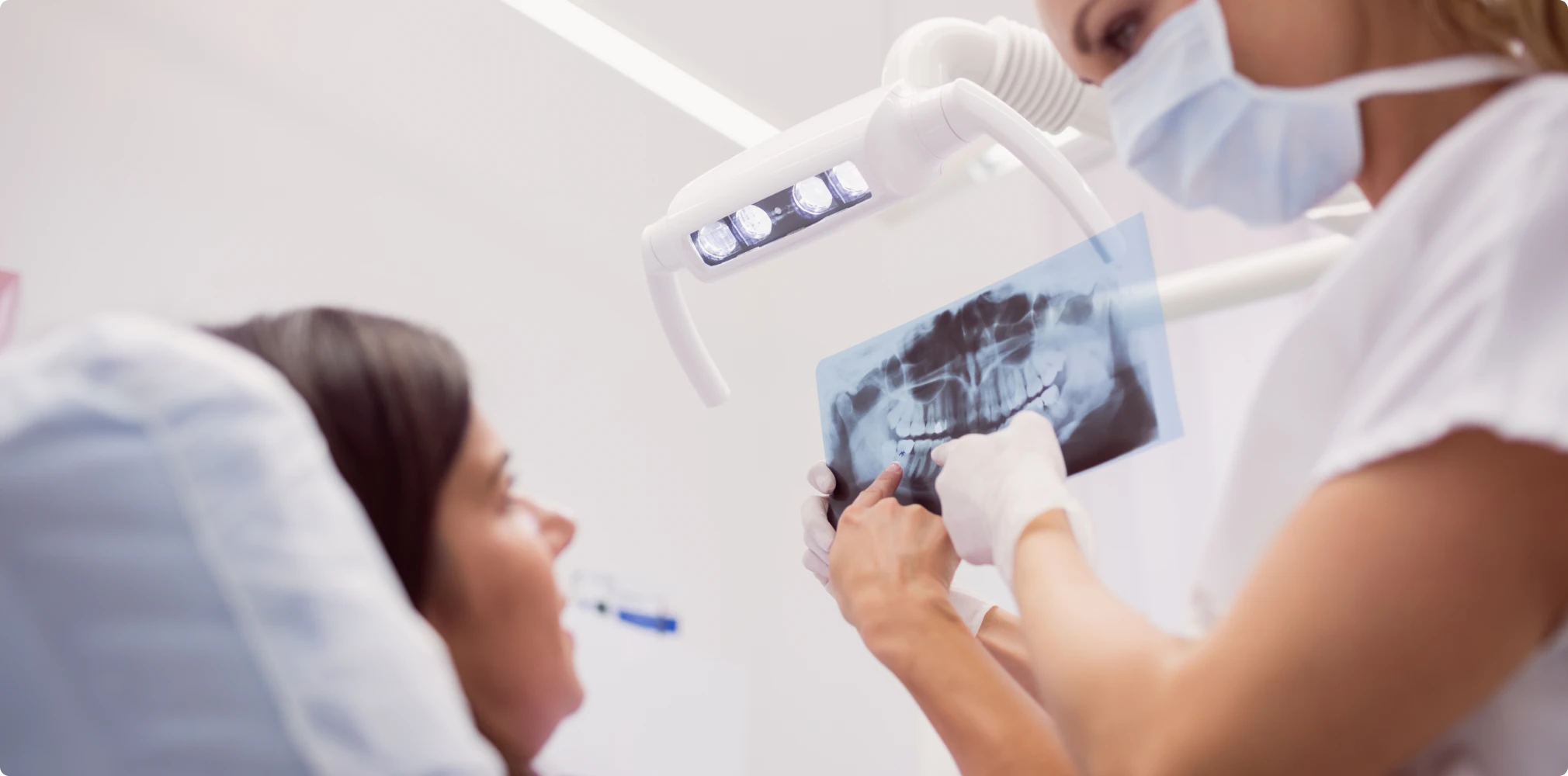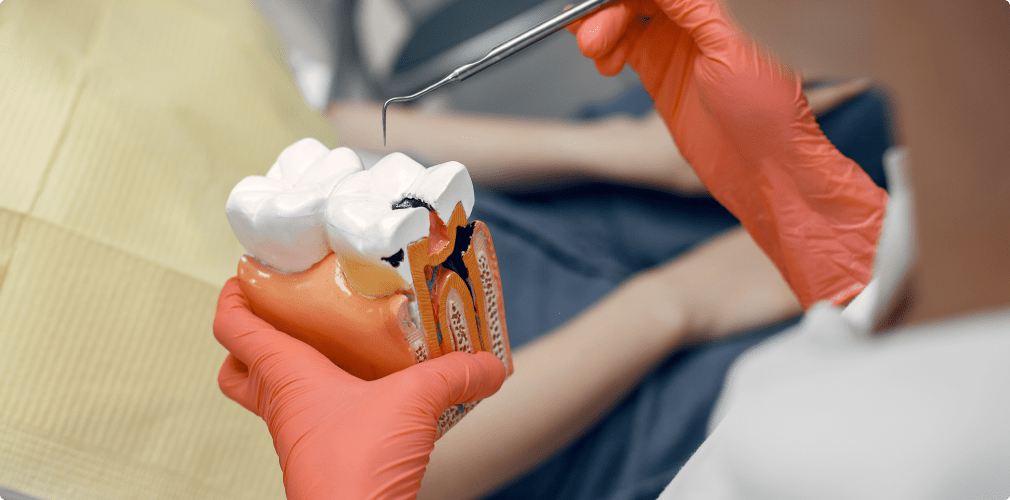Descaling
Dental tartar is formed by the mineralization of plaque. When brushing is incomplete, plaque persists and forms tartar, whose strong attachment to the tooth prevents it from being removed by the simple action of a toothbrush. There are areas where tartar forms more regularly, notably behind the lower incisors (mandibular incisors), but all tooth surfaces can be affected, including interdental spaces. In addition to the unsightly appearance of this rough, slightly yellowish deposit, tartar creates the conditions for the development of gingival inflammation (gingivitis), characterized by bleeding gums that appear redder and more swollen. If this inflammation persists, it will lead to the progressive destruction of the tooth’s attachment (known as periodontitis), i.e. the gradual loss of the bone in which the tooth is anchored, resulting in recessions (sometimes called “loosening”), mobility and even loss of the tooth if the situation continues to evolve.

To stop this phenomenon, the dental surgeon performs scaling. Using curettes and special instruments such as ultrasonic inserts, he will remove tartar from the tooth without damaging it. If the area of tartar deposit is extensive, the dental surgeon may propose subgingival scaling, i.e. in areas inaccessible to the patient’s toothbrush. After scaling, tooth surfaces are smoothed to make it more difficult for new tartar deposits to set in. The frequency of scaling should be assessed by the dental surgeon according to each patient’s situation.
Rigorous oral hygiene, including the use of interdental brushes and dental floss, will help prevent the onset of gingivitis and its complications.
Tooth decay
Epidemiology
Tooth decay is a major public health problem in many industrialized countries, affecting the majority of the population. Classically, it is described as the result of four concomitant factors: the host (the patient and his teeth, his oral environment), diet, the presence of cariogenic bacteria (i.e. those that cause caries), and time. But we know that other factors can influence the onset of caries, such as saliva quality, fluoride intake, hygiene habits and socio-demographic characteristics.

Mechanism
The mineralized structures of the tooth (enamel, dentin) are subject to constant exchange with the oral environment, resulting in variations in pH (i.e. acidity level). After taking food, the pH tends to decrease (become more acidic). Cariogenic bacteria will transform sugars in the diet into acids, creating an acidic environment in the mouth that demineralizes tooth structures. It takes around twenty minutes after eating to return to a less acidic environment and allow remineralization of tooth structures. The more food is consumed over time, the longer this delay will be, and the demineralization phase will take precedence over the remineralization phase, leading to progressive tissue destruction: this is dental caries. Several bacteria are involved, including Streptococcus mutans and Lactobacillus acidophilus. It should be noted that almost all foods contain sugars in various forms. The presence of fluoride in toothpaste remineralizes enamel crystals into a more resistant form, making it an indispensable tool for preventing tooth decay.
Clinic
Tooth decay is a progressive process. In the earliest stages, a slight white patch of demineralization can be seen. If left untreated, it will progress and slowly turn brown or black, gradually destroying dental tissue. At this stage, decay is irreversible. The carious lesion then progresses to the collapse of the enamel surface and cavitation, i.e. a “hole”. By reaching the dentin, the layer beneath the enamel, decay progresses all the faster as the tissue is less mineralized. Aches and pains may appear in the early stages, but are often painless. In fact, a cavity may not hurt at all! Regular check-ups enable us to diagnose cavities before they cause pain, and to take early action to minimize damage. If left untreated, decay will progress to the pulp – the nerves and blood vessels inside the tooth – causing severe pain and inflammation, which can lead to infection. Tooth decay can destroy a tooth to such an extent that it can no longer be treated and must be removed. That’s why regular check-ups with your dentist are so important.
Also worth knowing: Dental brightening at Dr. Maire’s dental office in Lisbon